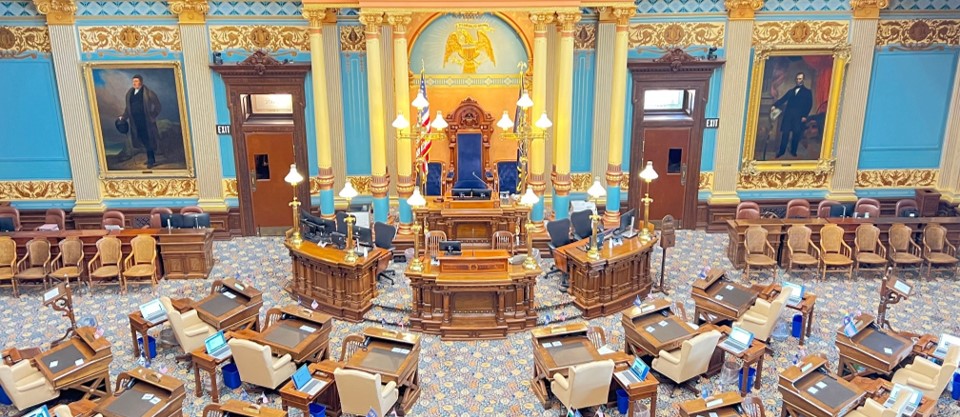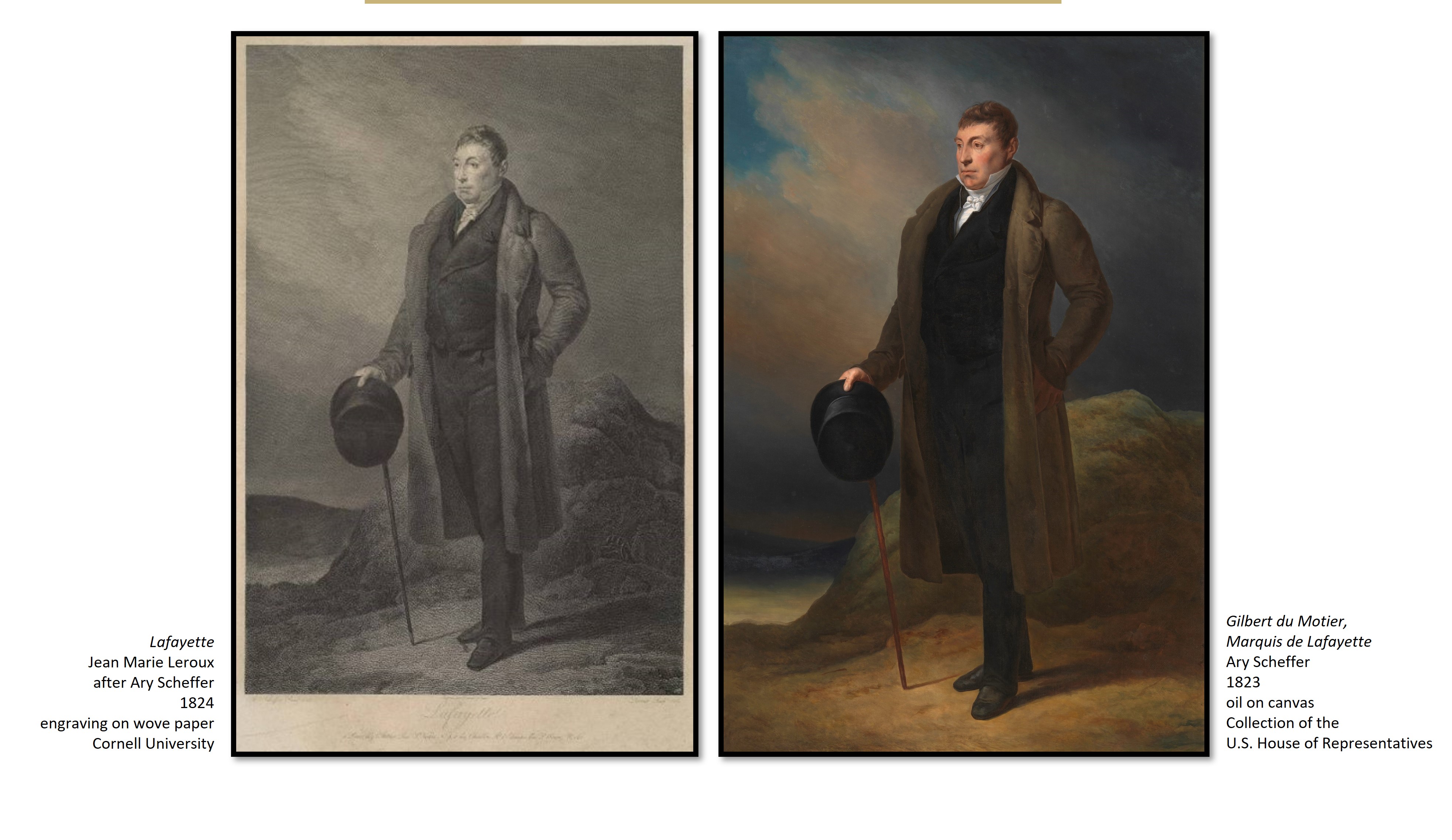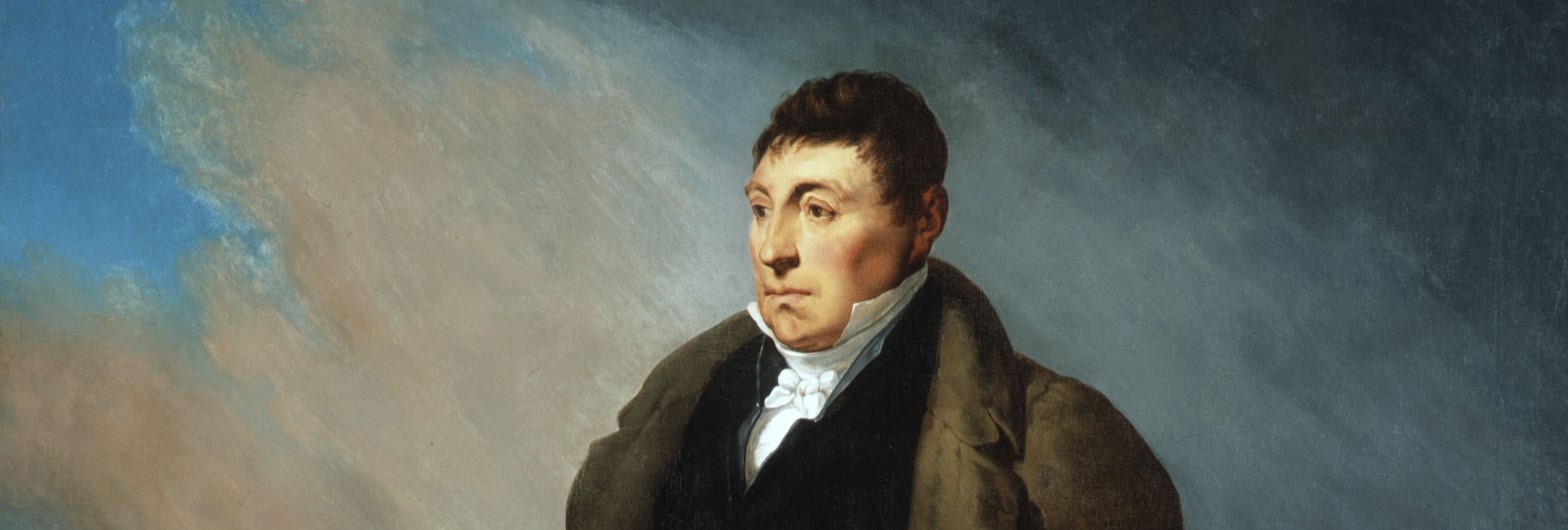
This year, the Michigan State Capitol’s portrait of the Marquis de Lafayette turns 200 years old! Completed by American artist James Alexander Simpson in 1825, it is the oldest portrait in the Capitol’s collection.
Lafayette was a prominent and influential figure in both the American and French Revolutions. Later in his life, years after helping America win its independence, he returned to the United States to travel and witness the republic that he had helped to create. This trip, later dubbed his Farewell Tour, was extended to last 13 months and cover all 24 existing states. Though Michigan had not yet entered the Union, it would later adorn its Capitol with a painting of the General. To learn more about how and why Michigan acquired a portrait of Lafayette, you can watch our most recent program, “Honoring Lafayette: A 200-Year Portrait Celebration.”
Although the Capitol’s portrait of Lafayette was painted by James Alexander Simpson, it is perhaps more apt to say that it was painted by Simpson, after Ary Scheffer. In fact, the Simpson portrait is almost an exact copy of Scheffer’s painting from two years prior, which the Dutch-French artist had sent as a gift to the American people following Lafayette’s arrival to their country. Though it may sound alarming to present-day readers, the practice of copying was actually widely accepted by artists of the early 19th century.
Copying was a practical necessity of the time period, as it was a useful way to disseminate information. In the case of Scheffer’s portrait of Lafayette, copies of the original painting helped to spread the General’s likeness throughout America, along with stories of his heroism. They also ensured that memories of the man and his tour festivities would live on. Just think - this blog post about Lafayette would not exist, if not for the Capitol’s (copied) portrait of him!
Scheffer’s portrait of Lafayette became the most copied version of his likeness in the early 19th century. Aside from copyists, like Simpson, creating paintings from the piece, it was also reproduced in a variety of other media. Prints, made from etchings of the work, were distributed far and wide; the best known of these was by the French artist Jean-Marie Leroux. Lafayette’s face, as captured by Scheffer, was also placed on souvenir items such as porcelain dishware, decorative glass, and textiles.
Reproductions of Lafayette’s likeness, paired with stories of his tour and accompanying celebrations, led him to become one of the most recognizable men in the young nation. It is easy to imagine, therefore, the excitement that would have surrounded a portrait of the General arriving at Michigan’s first state capitol in the fall of 1840. The portrait went on to be displayed in all three of Michigan’s capitol buildings. Today, it hangs in the Senate Chamber, in a place of honor beside the rostrum.
To learn more about the Capitol’s portrait collections, please visit our art website!


Marquis de Lafayette
James Alexander Simpson
c. 1825, oil on canvas
Michigan State Capitol Collections


